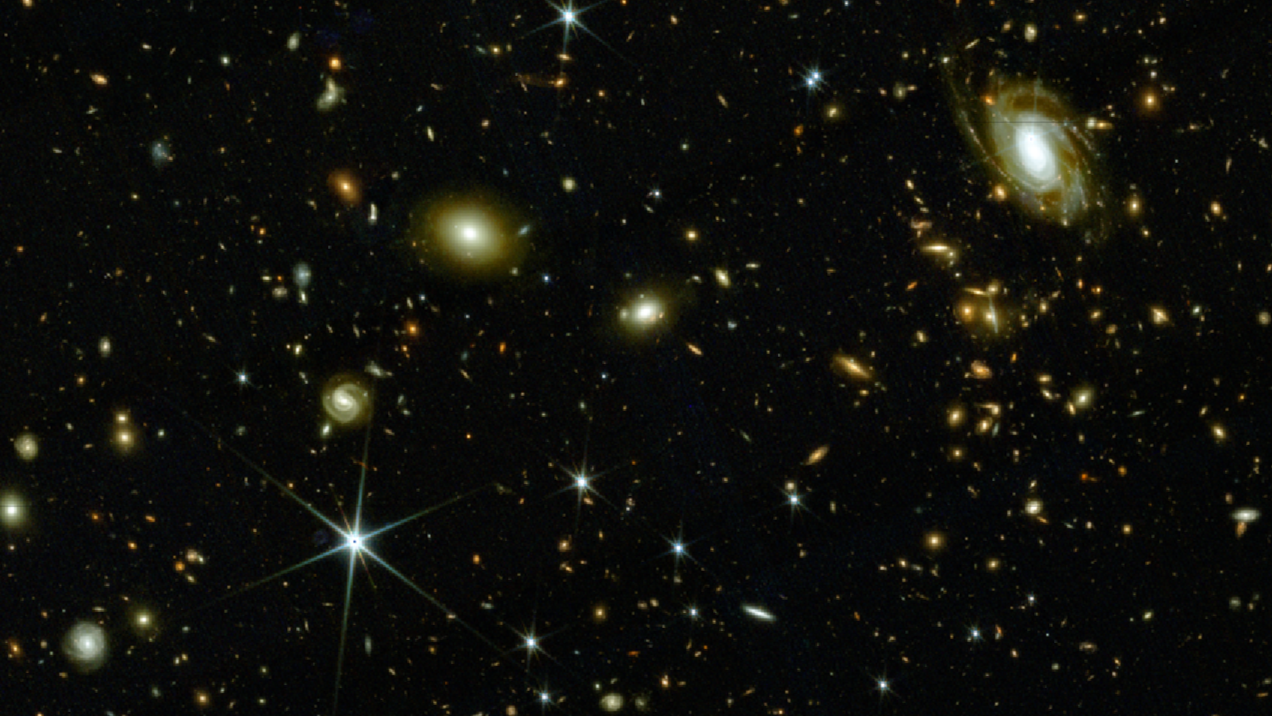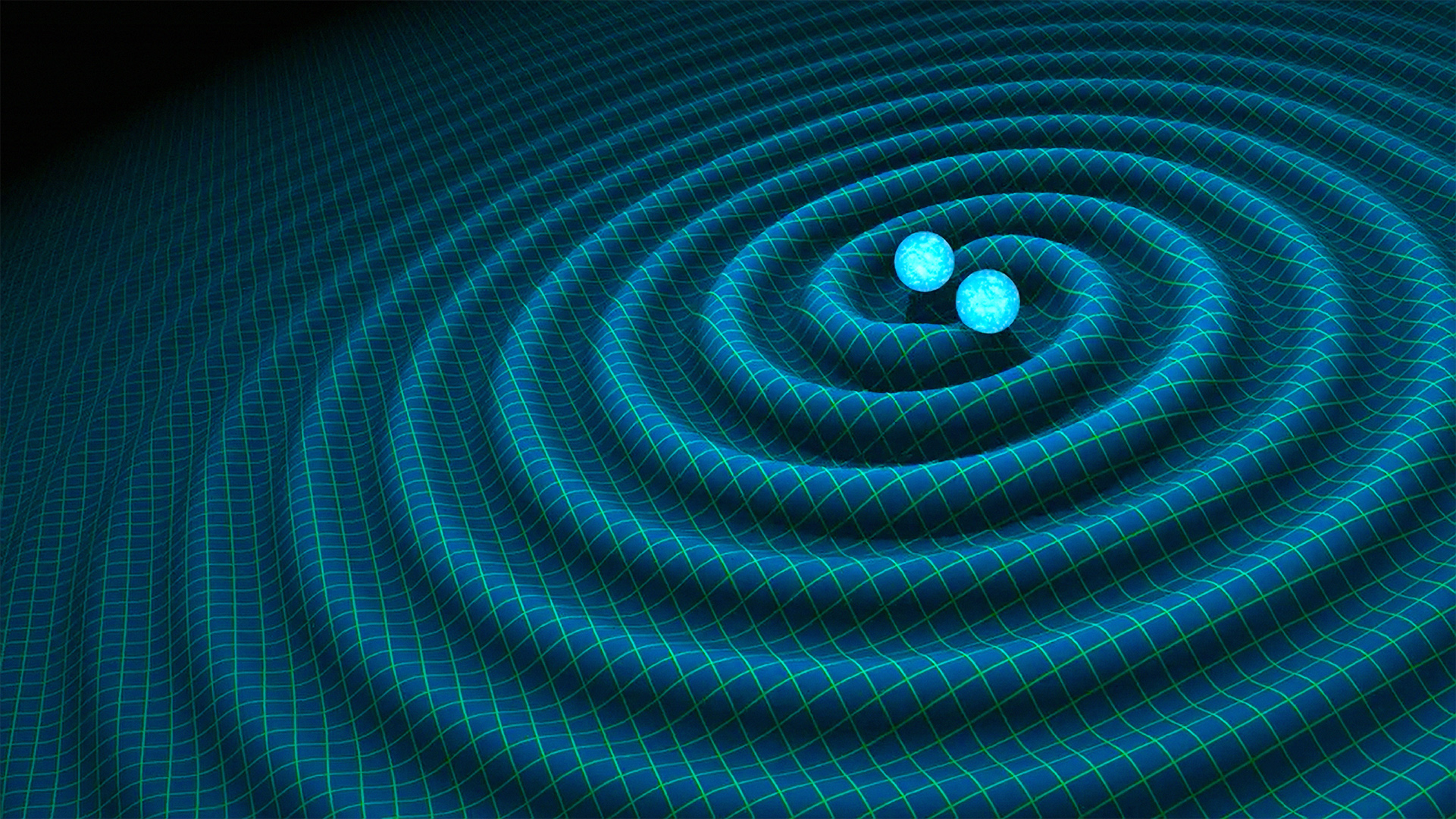
Sharmila Kuthunur
Sharmila Kuthunur is a Seattle-based science journalist focusing on astronomy and space exploration. Her work has also appeared in Scientific American, Astronomy and Live Science, among other publications. She has earned a master's degree in journalism from Northeastern University in Boston. Follow her on BlueSky @skuthunur.bsky.social
Latest articles by Sharmila Kuthunur

NASA raises the odds that an asteroid could hit the moon in 2032
By Sharmila Kuthunur published
Asteroid 2024 YR4, once the highest impact risk ever recorded, now poses no threat to Earth but has a slightly increased chance of striking the moon in 2032.

James Webb Space Telescope reveals largest-ever panorama of the early universe
By Sharmila Kuthunur published
Astronomers unveiled the James Webb Space Telescope's largest view yet of the early universe in a richly detailed catalog of nearly 800,000 galaxies.

Astronomers simulate a star's final moments as it's swallowed by a black hole: 'Breaks like an egg'
By Sharmila Kuthunur published
A neutron star's final moments may spark violent starquakes, monster shock waves, and even a fleeting, never-before-seen object called a black hole pulsar.

James Webb Space Telescope unveils fiery origins of a distant, hellish exoplanet
By Sharmila Kuthunur published
"Studying the chemistry of ultra hot planets like WASP-121b helps us to understand how gas giant atmospheres work under extreme temperature conditions."

Dust devil on Mars photobombs NASA Perseverance rover's selfie (photo)
By Sharmila Kuthunur published
NASA's Perseverance rover has marked a milestone with a spectacular new selfie, and a surprise visitor.

Scientists spot high-speed galaxy collision 11 billion light-years away: 'We hence call this system the cosmic joust'
By Sharmila Kuthunur published
A galactic collision 11 billion light-years away reveals how an actively feeding supermassive black hole disrupts star formation in a nearby galaxy.

The moon doesn't have a magnetic field, so why does it have magnetic rocks?
By Sharmila Kuthunur published
A new simulation suggests a massive asteroid impact may have briefly supercharged the moon's magnetic field, leaving behind magnetized rocks that still carry its signature.

Jupiter used to be twice as big as it is now — it could have held 2,000 Earths
By Sharmila Kuthunur published
A new study reveals early Jupiter was twice its current size with a magnetic field 50 times stronger.

Black hole dance illuminates hidden math of the universe
By Sharmila Kuthunur published
Scientists have made the most accurate predictions yet of the gravitational waves produced when two black holes fly past each other.

Giant young star is growing by 2 Jupiter masses every year, new study shows
By Sharmila Kuthunur published
New radio observations of the star HW2 show one of the fastest growth rates ever recorded, shedding light on how massive stars form from swirling gas disks.

Scientists calculate when the universe will end — it's sooner than expected
By Sharmila Kuthunur published
New calculations suggest that the universe's most enduring celestial objects, such as white dwarf stars, are decaying faster than previously thought.

Venus' crust is surprisingly thin. Could this explain why it's so geologically active?
By Sharmila Kuthunur published
A fresh look at Venus' geology suggests that the Venus' crust may be far thinner than once believed.

Volcanoes shaped the moon from the inside out, scientists find: 'Our team was genuinely puzzled'
By Sharmila Kuthunur published
Data from NASA's GRAIL mission reveals evidence of ancient volcanic heat still influencing the moon's internal structure.

NASA's Europa Clipper probe snaps ghostly thermal portrait of Mars en route to Jupiter
By Sharmila Kuthunur published
NASA's Europa Clipper spacecraft captured a thermal image of Mars during a gravity-assist flyby, testing instruments ahead of its mission to explore Jupiter’s ocean moon Europa.

A tiny glass bead from the moon offers clues to its hidden interior
By Sharmila Kuthunur published
A glass bead retrieved by China's Chang'e-5 lunar mission is offering a glimpse into the moon's hidden interior and violent past.

Hubble Telescope sees wandering black hole slurping up stellar spaghetti
By Sharmila Kuthunur published
Astronomers have caught a black hole far from the center of its galaxy ripping a star to shreds — offering for the first time evidence of a rogue supermassive black hole in action.

Cosmic imposter bathes distant nebula in fiery red glow: 'This star should not be here'
By Sharmila Kuthunur published
The brilliant blue-white star lighting up the red nebula Sh2-46 hints at a dynamic and possibly fleeting encounter that could reshape the nebula's appearance over time.

Earth's skies pulse in sync with the sun's solar flares
By Sharmila Kuthunur published
Earth's atmosphere pulses in sync with the sun's fiery outbursts, indicating it is more sensitive to solar activity than previously thought, according to new research.

James Webb Space Telescope finds coldest exoplanet ever seen, and it orbits a dead star
By Sharmila Kuthunur published
"It's a rare opportunity to place our own solar system in a broader galactic context."

Doubts over signs of alien life on exoplanet K2-18b are rising: 'This is evidence of the scientific process at work'
By Sharmila Kuthunur published
An independent analysis of recent data from K2-18b casts doubt on claims of detecting alien life on the distant exoplanet.

These are the sharpest images yet of planets being born around distant stars
By Sharmila Kuthunur published
Astronomers have captured the sharpest, most detailed images yet of young solar systems where planets are just beginning to take shape.

What can ripples in spacetime reveal about black holes? Quite a bit, it turns out
By Sharmila Kuthunur published
Cosmic echoes from some of the universe's most violent collisions are far more nuanced than scientists had realized, according to new research.

AI designs 50 gravitational wave detectors that could outperform human-made ones
By Sharmila Kuthunur published
Artificial intelligence could offer a powerful pathway to supercharge our ability to "hear" the universe, according to new research.

The sun might be spitting out particles that create water on the moon
By Sharmila Kuthunur published
"With only lunar soil and a basic ingredient from the sun — which is always spitting out hydrogen — there's a possibility of creating water."

Hubble Telescope snaps stunning portraits of Mars, a celestial moth and more in spectacular 35th anniversary photos
By Sharmila Kuthunur published
As scientists and space enthusiasts commemorate the Hubble Space Telescope's 35 years in orbit, the mission team joined in by delivering a fresh collection of awe-inspiring images.
Get the Space.com Newsletter
Breaking space news, the latest updates on rocket launches, skywatching events and more!
